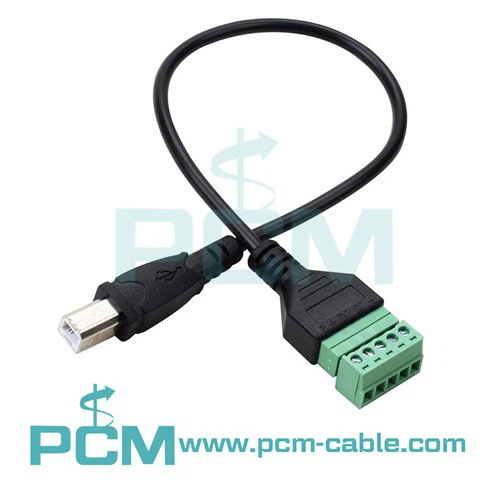Basic overview of D-sub connectors
The D-sub connector was originally developed by CANNON in the 1950s for transmitting signals in computers and other electronic devices. They usually have 9, 15, 25, 37 or more pins, which vary depending on the specifications. These connectors are widely used in serial, parallel, display connections, computer peripherals, and various other devices.
Differences in specifications
Although D-sub connectors have a similar D-shape in appearance, their specifications may vary greatly. The most common D-sub specifications include DE-9, DB-15, DB-25, etc., where the numbers represent the number of pins on the connector. Each specification has its specific purpose, for example, DE-9 is commonly used for RS-232 serial ports, while DB-15 is commonly used for VGA display connections.
The differences between these specifications are not only reflected in the number of pins, but also in the distribution, purpose, and supported signal types of the pins. Therefore, when we talk about D-sub connectors, we are actually discussing a series of connectors with different specifications, and they are not exactly the same.
Diversity of signal types
The D-sub connector can support various types of signal transmission, including analog and digital signals. Different specifications of connectors may be suitable for different signal types, and their performance may also vary as a result. Some connectors are designed for high-frequency digital signals, while others are more suitable for low-frequency analog signals.
Therefore, when choosing a D-sub connector, it is necessary to consider the required signal type and whether the connector specifications match. This diversity makes D-sub connectors suitable for many different application areas, thus meeting various needs.
Physical dimensions and appearance
Although D-sub connectors have similarities in shape, there may still be differences in their physical dimensions and appearance. Some connectors may be more compact and suitable for applications with limited space, while others may be larger for scenarios that require more pins and more signals.
In addition, there may be differences in the shell material and pin arrangement of D-sub connectors. Therefore, in practical selection and use, it is crucial to ensure that the selected connectors meet specific application requirements in terms of physical size and appearance.
Different application fields
Due to their various specifications and applicability to various signal types, D-sub connectors are widely used in different application fields. From computer hardware to industrial control systems, to audio and video devices, D-sub connectors are ubiquitous.
Each application field has different requirements for the performance and characteristics of connectors. In some applications, high-frequency digital signal transmission may be required, while in other applications, the stability and accuracy of analog signals may be more critical. Therefore, although D-sub connectors are similar in shape, specific requirements in the application field may lead to the selection of connectors with different specifications.
Standardization and customization
Although there are many common D-sub connector specifications, in reality, some specific applications may require customized connectors. In some cases, manufacturers may need to integrate additional signal pins, shielding, or other special features into connectors to meet the needs of specific devices.
On the other hand, there are also some D-sub connectors manufactured according to international or industry standards, which ensure the interoperability and universality of the connectors. Therefore, although there are many differences, in some cases, D-sub connectors can indeed be considered as relatively standardized components.

Dec 29, 2023Leave a message
Are all D-sub connectors the same?
Previous
Is D-sub the same as DVI?Send Inquiry




